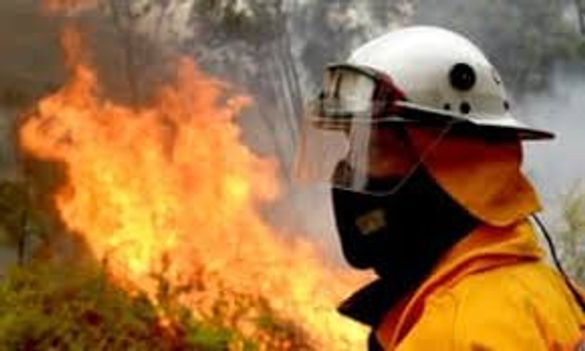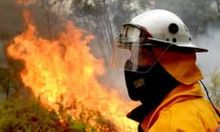 19 Jan 2020
19 Jan 2020
For example, Stegbar has a range of timber windows and doors that have been tested and satisfy the provisions of AS 1530.8.1 and meet the requirements for bushfire attack level BAL-40.
Compliance BackgroundThe Performance Requirement P2.3.4 of Volume Two (Class 1 and 10 Buildings) of the National Construction Code (NCC) requires a Class 1 building (including decks) or a Class 10a building that is constructed in a designated bushfire prone area to be designed and constructed to reduce the risk of ignition from a bushfire, appropriate to:
- the potential for ignition caused by burning embers, radiant heat or flame generated by a bushfire, and
- the intensity of the bushfire attack on the building.
The NCC defines a designated bushfire prone area as land which has been designated under a power of legislation as being subject, or likely to be subject, to bushfires. As a consequence, the process for identifying bushfire prone areas is a matter for each individual state and territory regulator, and while it differs from state to state, it usually involves an approach to the relevant council or reference to a land mapping facility provided by the respective state regulator or agency. The NCC also includes a number of state/territory variations that should be satisfied.
Where an allotment is in a bushfire prone area, the NCC goes on to provide Building Solutions that meet the requirements of P2.3.4. Part 3.7.4 provides two compliance options:
- complying with Australian Standard AS 3959 (Construction of buildings in bushfire-prone areas), or
- using an alternate bushfire protection design as an Alternate Solution that meets P2.3.4.
Following option 1 and using the Australian Standard approach, AS 3959 divides bushfire prone areas into six bushfire attack levels (BAL), based on the severity of the building's potential exposure to ember attack, radiant heat and direct flame contact:
- BAL-LOW - very low risk
- BAL-12.5 - low risk
- BAL-19 -moderate risk
- BAL-29 -high risk
- BAL-40 -very high risk
- BAL-FZ -extreme risk (Flame Zone)
AS 3959 covers the methodology for determining the BAL for an allotment and goes on to provide the construction requirements for each level of BAL, including for floors, roofs, external walls and windows, verandahs and carports.
By complying with the construction requirements for the respective BAL classification, a new home will meet the requirements of the NCC.
While the standard focuses on providing construction specifications for materials, elements of construction and systems for each of the six BALs, it also provides the alternative of using materials, elements of construction and systems that comply with the simulated fire testing provisions of Australian Standard AS 1530.8.1 (for BAL-12.5 to BAL-40) and AS 1530.8.2 (for BAL-FZ).
It is important to note that the standard recognises more than one means of compliance. Although it recognises metal framed windows and bushfire shutters, the standard does not prohibit the use of traditional building materials such as timber windows and door frames (provided they have been fire tested and satisfy the requirements of AS 1530).
Clause 3.8 of AS 3959 states that:
Where any material, element of construction or system satisfies the test criteria of either AS 1530.8.1 for BAL-12.5, BAL-19, BAL 29 and BAL-40 or AS 1530.8.2 for BAL-FZ, it satisfies the requirements of that BAL.
For example, in the case of BAL-40, the construction requirements are found in Clauses 8.2 to 8.8 of AS 3959.
While Clause 8.5.2 (a) of the standard requires that windows are to be completely protected by a bushfire shutter complying with the standard, Clause 8.5.2 (b) of the standard also provides the alternative option of using metal frames and metal hardware, among other things (such as minimum 6mm thickness toughened glass).
Importantly, a third option of using a fire tested system that has met the fire test requirements of AS 1530.8.1 is also available to designers, specifies and builders in BAL-40.
In particular, Clause 8.1 of AS 3959 states that:
Any element of construction or system that satisfies the test criteria of AS 1530.8.1 may be used in lieu of the applicable requirements of Clauses 8.2 to 8.8 (see Clause 8.3).
Compliance Options for WindowsWindows that meet the requirements of Clause 8.5.2(a) (using bushfire shutters) or 8.5.2(b) (using metal frames) or 8.1 (using windows that meet the simulated bushfire test criteria in AS 1530) will satisfy the requirements of the National Construction Code.
Stegbar has a range of cedar doors and cedar windows that have been subjected to the simulated bushfire testing provisions of AS 1530.8.1 and certified as BAL-40 compliant. This range of timber windows and doors is suitable for use in bushfire attack level BAL-40.
More details on Stegbar's range of bushfire complying timber windows and doors can be found at:
http://www.stegbar.com.au/Info-Centre/About-windows-and-doors/Bushfire-range
A further important point to note is that BAL-40 is the highest stringency bushfire attack level outside the flame zone BAL-FZ. It requires the highest level of protection against ember attack and radiant heat. Windows that meet the requirements of AS 1530.8.1 for BAL-40 also meet the requirements in BAL-12.5, BAL-19 and BAL-29.


